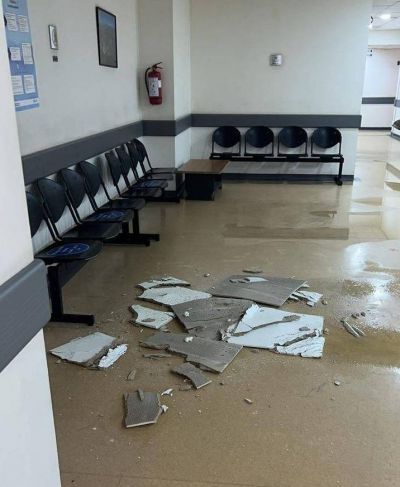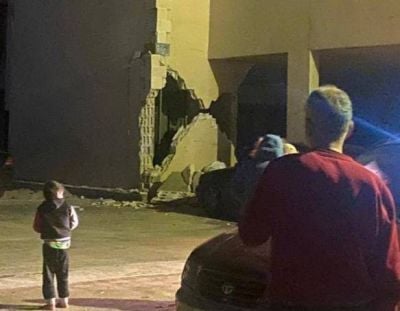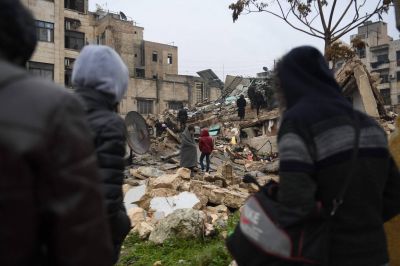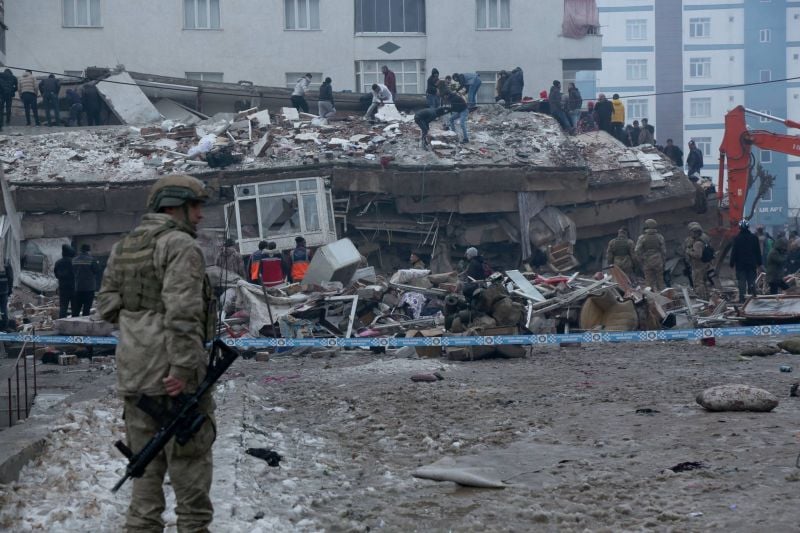
People search for survivors under the rubble following an earthquake in Diyarbakir, Turkey Feb. 6, 2023. (Credit: Sertac Kaya/Reuters)
BEIRUT — After Monday’s deadly earthquake, a tweet from a self-described researcher at an institute that uses the “geometry between celestial bodies” to predict earthquakes quickly gained 33 million views because it seemed as though he had accurately "predicted" the earthquake, although he did not specify a timeframe.
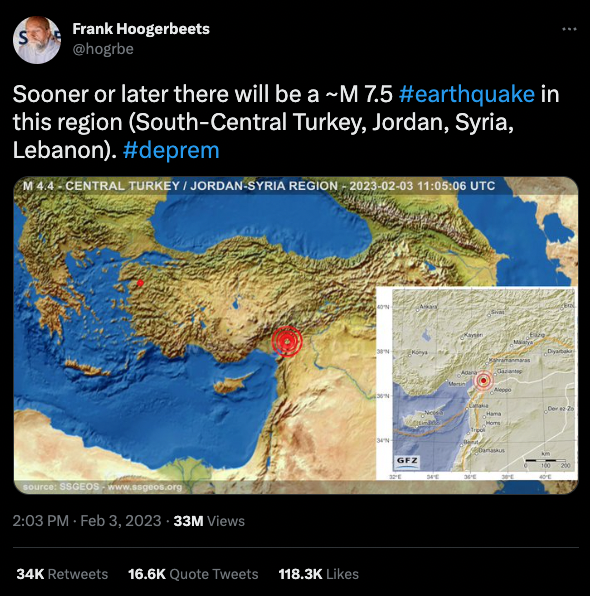
The US Geological Survey says that predicting an earthquake is impossible.
“Neither the USGS nor any other scientists have ever predicted a major earthquake. We do not know how, and we do not expect to know how any time in the foreseeable future,” they state on their website.
The best that science can offer is probabilities of an earthquake in a region in a span of years, rather than specific dates. (Aftershocks, however, tend to follow well-established patterns in terms of rate and magnitude.)
Tony Nemer, a geology and earthquake researcher at the American University of Beirut, told L’Orient Today that, scientifically, "there is no such thing as predicting earthquakes.”
He compared seismologists with medical doctors: “A heart doctor, even if they know their patient is not doing well, cannot predict their moment of death," Nemer told L'Orient Today.
A follow-up tweet from the same “celestial bodies” researcher’s account said that “these earthquakes are always preceded by critical planetary geometry” and garnered more than seven million views. A cautionary note has been added by Twitter users to the bottom of the tweet stating “There is no scientific basis for earthquake predictions…Claims of correlation with planetary alignment have been disproven.”
A Lebanese-Australian entrepreneur with more than 360 thousand followers on Twitter also promoted the “planetary geometry” page referred to above.
Within hours the swamp of confusion only got deeper, as a fake account started impersonating the aforementioned researcher, garnering tens of thousands of views. Social media users also reported receiving other dubious predictions from friends and family.
Some government institutions kicked into gear to fight the rumors. The Lebanese Agricultural Research Institute (LARI) tried to tamp down on the rumors, clarifying that earthquakes cannot be predicted and are not related to the weather taking place above the earth’s surface, such as the heavy rains of the past few days.
“There is no need to panic that earthquakes will occur because of heavy rain, snow or wind,” the agency said in a statement. “There is no need for speculation, intimidation or gossip,” it added.
The Director of the National Center for Geophysics, Marleine Brax, also publicly denied the link between earthquakes and weather in comments given to the state-run National News Agency.
According to the USGS, “Statistically, there is approximately an equal distribution of earthquakes in cold weather, hot weather, rainy weather, etc. Very large low-pressure changes associated with major storm systems (typhoons, hurricanes, etc) are known to trigger episodes of fault slip (slow earthquakes) in the Earth’s crust and may also play a role in triggering some damaging earthquakes. However, the numbers are small and are not statistically significant.”
Safety information
Other government bodies, in particular disaster response bodies, focused on providing safety information to the public.
Shortly after the initial earthquake struck, the Lebanese Civil Defense issued a Facebook post with advice for earthquake safety measures.
Elie Kheirallah of the Civil Defense told L’Orient Today that the entity publishes statements on social media and circulates them to all written, visual and audio-based media outlets in the country in order to communicate with the public. “There is no doubt that people are following the official statements issued by the General Directorate of Civil Defense,” he said.
A few hours later the Internal Security Forces circulated a 2018 infographic on preparing for and surviving an earthquake. The Lebanese Red Cross did not post on its website or its social media platforms as of press time.
In a Monday morning meeting of the National Committee for Disaster and Crisis Management, attendees agreed that the Disaster Risk Management Unit affiliated with the cabinet would, in coordination with the Civil Defense and Lebanese Red Cross, circulate earthquake safety instructions to the public. It would also conduct a national campaign targeting various institutions to have them develop risk mitigation plans. However, the Disaster Risk Management Unit did not post on social media as of press time.
The committee also called for the National Council for Scientific Research to serve as a “shield for rumors and false news” about earthquake risks and for the Information Ministry to circulate NCSR data and guidelines via the media to raise awareness and prevent panic among citizens.
Fake news from a lack of information
A recent review of crises in eight European countries in the International Journal of Disaster Risk Reduction says the spread of false information in the wake of a crisis is mainly “a result of the lack of up-to-date and officially confirmed public information.”
The review adds that “building and keeping the relationship of trust between institutions and the public mitigates people's vulnerability to false information because it can prevent people from relying on untrustworthy sources.”
Government responses to the problem vary, the study found, with some centralizing their efforts to track down and rebut false information and others prioritizing spreading accurate information. Some have even taken a harder-line approach.
In October 2018, Indonesian police arrested eight people in the aftermath of a 7.5-magnitude earthquake for allegedly spreading false information exaggerating the dangers of volcanic eruption, dam collapse and future earthquakes.
The initiative failed to solve the problem, however: in 2019, bogus WhatsApp rumors of an impending tsunami kept thousands of Indonesians terrified in shelters for two weeks after a 6.5 magnitude quake.
Additional reporting by Wael Taleb
